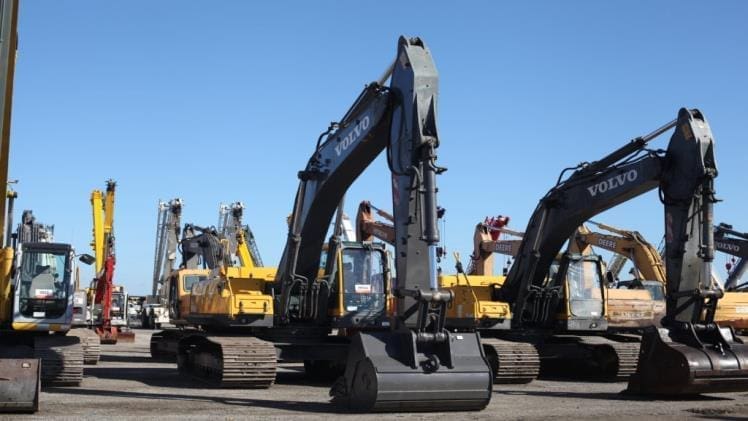Construction equipment auctions provide an effective means of procuring heavy machinery at a much more reasonable cost and in an easier and quicker way than purchasing from dealerships.
Before diving in head first, there are certain aspects you must prepare for before starting out on your adventure. Here are a few tips by Boom & Bucket to ensure the most out of your experience.
Buying at an Auction
Before bidding at an auction, it’s essential that you become educated on the process, establish financing arrangements and evaluate equipment thoroughly. Register at either the site or online auction platform before bidding – some may require proof of identification before bidding can take place.
An auction typically kicks off with the sound of a bell, and an auctioneer will provide details about each piece for sale before starting bidding. Some auction companies even allow potential buyers to inspect equipment prior to bidding starting.
Producers attending auctions should consult a certified mechanic to conduct a pre-auction inspection to ensure they are prepared for bidding processes, fees such as buyer’s premium, etc. that could alter their final purchase price and so on.
Finding an Auction
Once you find equipment of interest at an auction, it is a wise idea to do your research on it and its history. Furthermore, learning more about the auction company and their process for registration and bidding could prove useful as well.
Registering for an auction can either take place online beforehand, or in-person on the day itself. In either instance, you will typically require identification and bidding number(s).
Always set a budget that you can spend on equipment. Keep in mind that auctions usually charge an auction buyer’s premium of up to 10%; therefore, be prepared for that in your calculations. Furthermore, take time to understand all available financing options and apply early for credit approval.
Financial Preparation
As well as paying for equipment you purchase, there may also be post-sale costs such as transporting and refurbishing costs to consider in your budget. Therefore, it’s wise to research these additional expenses beforehand and factor them into your plan.
Pre-approve yourself for the loan amount you intend on using; this will expedite the process once you arrive at the auction.
Plotting a purchase price is essential when preparing to participate in an auction. You can assess fair market value using pricing guides, recent auction results, dealer prices and even pricing guides from your favorite dealer. Be mindful of buyer’s premium fees that may be added onto the final bid amount in order to cover auction house services; fees vary by auction house.
Bidding at an Auction
Auctions provide contractors looking for both used and new equipment with a valuable resource for both purchases and sales, although auctioneering does require preparation and practice before proceeding with purchases or sales at such events.
Before purchasing equipment, first establish your maximum budget using reliable online sources like pricing guides and reviews. Also seek advice from colleagues within your industry who know about what equipment you are considering purchasing.
Be ready to finance the equipment purchases if they become necessary. It may take several auctions before finding equipment that suits your needs; additionally, sales tax and transportation charges will need to be covered once an auction item has been won.
Post-Sale Preparation
As either a contractor or equipment owner, auctions offer an exciting and efficient means of buying and selling machinery. But to maximize their effectiveness, auctioneers require being well informed and prepared.
Researching market values, reviewing auction catalogs and conducting equipment condition assessments. Furthermore, understanding how increment bid increments work at auction houses is also vitally important.
Finalize the auction preparation by cleaning and performing any necessary maintenance on your equipment before selling it at auction. This will ensure it looks appealing and works properly when put up for sale, increasing its appeal and potentially increasing sales – no one wants a backhoe covered with dirt!

